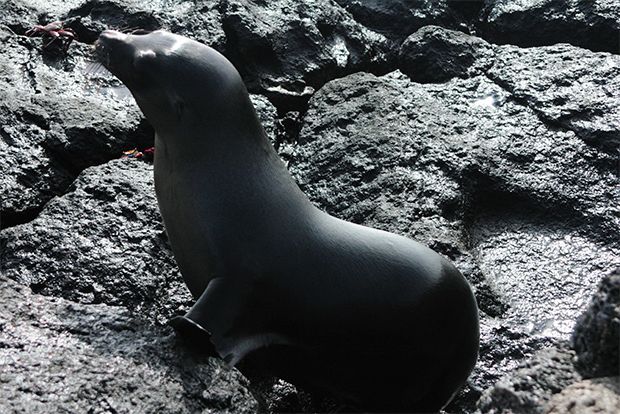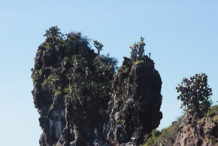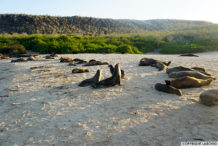Best Travel Agent for Galapagos
We are the best Galapagos local agency. Take a trip with galapagosinformation.com!. Best Travel Agent for Galapagos.
A holiday to the Galapagos Islands will be the journey of an individual’s lifetime. Situated 1,000 km from the Ecuadorian mainland, the archipelago is made up of 13 major islands, 5 of which are inhabited. Read more about the popular Islands taking a vacation here!
The Island’s interesting volcanic geology, as well as its rich plants and creatures are actually cherished and also examined by plenty of individuals, experts, and nature-lovers. Experts remain confronted by the puzzle of the way such a huge variety of species might develop in a far place such as the Galapagos Islands.
The explanation for tourists to check out the Galapagos Islands often is the large number of wildlife, freely romping with that tend to be acknowledged by many people solely watching Discovery Channel.
The Galapagos Islands certainly affect you significantly. Travel along with us and have the voyage of your life around playful sea lions, albatrosses, fiery reddish colored sally light-foot crabs, and sneaky frigate birds. Make your dream come true and contact us today!
Galapagos Islands Weather
There are 2 seasons: December to May is hot and wet and June to December is cool and dry. Yearly rain fall in the lower regions is 2-4in and the air temperature ranges around 69°-84°F/21°-29°C.
The Galapagos’s climate is determined by ocean currents. The unexpected climatic change caused by El Niño is generally disastrous: as much as 40% of sea lions and marine iguanas could perish during this period.
The convergence of 3 main oceanic currents produces an incredible mix of maritime life to Galapagos. Despite being situated in the tropics, the Galapagos micro-climate is remarkably dry. During the cool season, the Humboldt Current brings very cold water, that generates thermal inversions that obstruct rainfall.
At this time, a fine mist named “garua” is formed as cold, moist air just above the ocean water meets a higher level of air which is warmed by the hot sun.
‘El Niño’ is a a rare event that happens around every 5-7 years. The south east trade winds slacken and cause the sea temperatures to elevate significantly causing storms and heavy rainfall.
Galapagos Islands Cruise Itineraries
Every licensed vessel sailing the Galapagos follows a 15-day path established and approved by Galapagos National Park. Throughout this period, a ship may not go to the same site twice, with the exception of the Charles Darwin Research Station on Santa Cruz. How lines section the 15 times may fluctuate, but four-, five- and eight-day options are the norm. Passengers can frequently combine these segments into 11-, 12- and 15-day cruises.
All ships basically follow the identical protocol, regardless of itinerary: Island visits and extra-curricular tasks are done during the day, and the majority of navigation is performed immediately.

Because the method of cruising continues to be standardized, picking the right itinerary has a lot to do with cruisers deciding which visitor sites are in their must-visit lists. Port research — particularly photo searching — is essential. Keep in mind the more the cruise, the farther west the ship will reach. That is not to mention the western islands are far better — it’s an issue of personal preference. If you cruise is also an important factor.
There’s one main exception: “Live aboard” boats carrying seasoned sailors are the only craft to see the northern islands, Darwin and Wolf, prime spots for ski lovers. In Darwin, where there’s no landing site, schools of hammerheads are known to congregate.
Galapagos cruises are often paired with land-based visits to Peru’s Machu Picchu, the Ecuadorian rain forest or other South American hotspots. Most passengers will spend a day or two exploring Quito or Guayaquil pre or post-cruise. It is basically necessary, provided the flight logistics.
Sierra Negra Volcano: Hiking enthusiasts are certain to love the opportunity of the steep ascent to the rim of Sierra Negra Volcano. The increase up takes around two hours with great vistas all around. Upon reaching the top you can feast your eyes on the world’s third-biggest caldera, surrounded by lush vegetation and home to many types of finch. Horse riding provides another perspective of the beautiful location.
Bolivar Channel: Many Isabela island cruises sail through the Bolivar Channel, a channel that separates Isabela Island and the neighboring Fernandina Island. The coldest waters in the Galapagos region, it is common to see whales and dolphins swimming near to your cruise ship.
Vicente Roca Point: At the north of Isabela Island, Vicente Roca Point is a top spot for snorkeling and boating. The twin coves shelter a variety of unusual species, including sunfish, seahorses, and puffer fish. Bird lovers will not be disappointed either, with terns, blue-footed boobies, and penguins, among others.
Galapagos wildlife experiences are plentiful on tours of Isabela Island, and you’re guaranteed to be thrilled if you decide on a Galapagos small ship cruise, a small luxury yacht, a dinghy excursion, or something different entirely.
Galapagos Facts
A great number of wildlife, traffic can get up close and personal to some of the world’s rarest animals. The Galapagos was home to the only surviving giant Pinta tortoise, “Lonesome George” which unfortunately died in June 2012. The convergence of three major oceanic currents allow an incredible mix of marine life into Galapagos. The endemic Galapagos marine iguana is known as the only lizard to float in the sea. Darwin’s study in Galapagos led to the groundbreaking theory of The Origin of Species.
In 1978 UNESCO nominated Galapagos as the first World Heritage site. The film Captain and Commander was filmed around the islands of Bartholomew and Santiago. The name ‘galapagos’, an old Spanish word for ‘saddle’, was initially employed by Bishop Tomas and his team to describe the giant tortoises but the name stuck. Because early presence of both English and Spanish populations in Galapagos, the Islands now have both Spanish and English names.
Darwin sailed to Galapagos on board the HMS Beagle at September 1835, when he was 26 years old. During the five weeks that he spent there, he moved to collect plants, stones, birds and insects. He observed the odd life forms and their adaptations to the harsh environment. He noticed that it was possible to differentiate which island that a tortoise came from by the shape of their shell. His most well-known research is of the several species of finches that prompted his revolutionary theory The Origin of Species, published in 1859.
GALAPAGOS CRUISES 2024
NEMO 3
| DEPARTURES | ITINERARY | AVAILABLE CABINS | SPACES | |
|---|---|---|---|---|
| There aren't available dates for the selected dates |
















